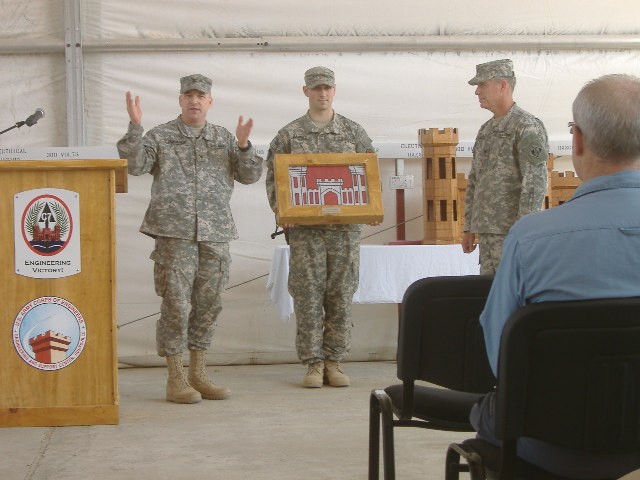
The U.S. Army Corps of Engineers has accomplished its mission of mobile ordnance cleanup in Iraq, and will now move refocused operations to a stationary location near Baghdad.
In a change of mission ceremony Nov. 21 in Iraq, the Coalition Munitions Clearance Program ended, and refocused efforts to destroy unusable munitions became the Coalition Munitions Disposal Program.
Under the CMC Program, managed by the U.S. Army Engineering and Support Center in Huntsville, Ala., mobile teams traveled the country destroying caches of enemy ammunition.
"The ammunition sites that were a concern have all been cleared and the ammunition depot has been turned over to the Iraqi army for their own control and operation," said Bill Sargent, Huntsville Center's CMC and CMD program manager.
The new CMD mission will involve a centralized collection point for the disposal of U.S. unserviceable ammunition and ammunition items recovered by the field units during their operations, Sargent said. The site will also destroy any caches of munitions found and brought to the site.
"Over the past five years, and through the successful partnership with U.S. Army Central and the U.S. Army Engineering and Support Center, this $1.5 billion program destroyed more than 346,000 short tons of explosive remnants of war at 51 clearance sites, denying the enemy from using these hazardous materials for improvised explosive devices that would have caused untold loss of life and property," said Col. Scott "Rock" Donahue, director, Multi-National Corps-Iraq, Engineers (C7).
At the height of the program, 18 mobile teams were operating in Iraq to support the CMC mission, and local national labor and subcontractors were hired at each of the 51 clearance sites.
"The toll on these honorable men and women performing this inherently dangerous mission was high: 43 expatriates and an untold number of local nationals lost their lives denying the enemy ammunition, ordnance and cache sites," Donahue said.
"I think this is a very important change for the Army," Sargent said. "It shows that we're winding down ... it shows the progress going on in the country."
Following the invasion of Iraq in March 2003, it was quickly realized that there was a need to dispose of an estimated 600,000 tons of captured enemy ammunition. In July 2003, Huntsville Center's Ordnance and Explosives Directorate was tasked with the Captured Enemy Ammunition disposal mission. CEA provided assistance in the controlling and disposing of massive stockpiles of munitions in Iraq.
The mission evolved into the CMC Program and Depot Operations Program in February 2006. The CMC Program was tasked with the subsurface clearance of previously destroyed ammunition sites in Iraq while the Depot Operations Program was tasked with standing up and operating two ammunition depots for the newly formed Iraqi army.

Social Sharing